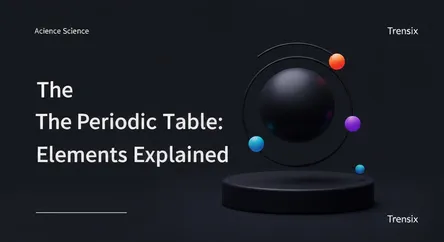Science
The Periodic Table: Elements Explained

Discover the periodic table, the organized chart of all known elements that forms the building blocks of everything in the universe.
What is it?
The periodic table is a tabular chart of the chemical elements, arranged by their atomic number, electron configuration, and recurring chemical properties. First devised in 1869 by Dmitri Mendeleev, the table organizes elements into vertical columns called groups and horizontal rows called periods. Elements within the same group typically share similar characteristics. This organization reveals the periodic law, which states that the properties of elements tend to recur periodically when arranged by atomic number. It is one of the most important tools in chemistry for students and scientists.
Why is it trending?
The periodic table consistently trends due to its central role in new scientific discoveries. Its seventh row was recently completed with the formal naming of four superheavy, synthetic elements: Nihonium (Nh), Moscovium (Mc), Tennessine (Ts), and Oganesson (Og). These additions, verified by the International Union of Pure and Applied Chemistry (IUPAC), filled the remaining gaps in that section of the table. The ongoing quest by researchers to synthesize even heavier elements, such as element 119 which would start a new row, keeps the periodic table relevant in modern physics and chemistry news.
How does it affect people?
The elements on the periodic table are fundamental to all aspects of human life. Everything around us is made of these elements, from the air we breathe (oxygen and nitrogen) to the water we drink (hydrogen and oxygen). Our bodies are composed of elements like carbon, calcium for our bones, and iron in our blood. Modern technology is entirely dependent on them; for example, smartphones contain over 30 elements, including lithium for batteries and silicon for chips. Understanding the table is crucial for advancements in medicine, engineering, and technology.